Thank you for trusting us with your care. Please follow these instructions closely to promote healing and prevent complications after your tooth extraction.
⏳ Immediate Care (First 24 Hours)
✅ DO:
- Keep the gauze pad in place for 30–60 minutes after the procedure. Replace with a clean one if bleeding continues.
- Apply gentle pressure by biting down on the gauze.
- Rest and limit physical activity.
- Use an ice pack on your cheek (20 minutes on, 20 minutes off) to reduce swelling.
❌ DO NOT:
- Do not rinse, spit, or use a straw for 72 hours.
- Do not smoke or vape for at least 48–72 hours—this increases the risk of dry socket.
- Do not touch the extraction site with your tongue or fingers.
💊 Pain & Medications
- Mild to moderate discomfort is normal. Use ibuprofen or acetaminophen as directed.
- Take prescribed medications (if any) exactly as instructed.
- Avoid aspirin—it may increase bleeding.
🩸 Bleeding
- Some oozing is normal for up to 72 hours.
- If bleeding continues:
- Place a clean gauze or moistened tea bag over the site.
- Bite down firmly for 30–45 minutes.
🥣 Diet
- First 24 hours: Stick to soft, cool foods like yogurt, applesauce, pudding, or smoothies (no straws).
- Avoid: Hot, spicy, crunchy, or chewy foods.
- Hydrate well, but drink from a cup—no straws.
🧼 Oral Hygiene
- Do not rinse your mouth for 24 hours.
- After 24 hours:
- Rinse gently with warm salt water (½ tsp salt in 8 oz water), 2–3 times a day.
- Continue brushing and flossing, but avoid the surgical area for a few days.
🚨 Call Us If You Experience: 610-867-7112
Swelling that worsens after 48 hours
Heavy bleeding that doesn’t stop after pressure
Severe pain after 2–3 days (possible dry socket)
Fever, chills, or signs of infection
